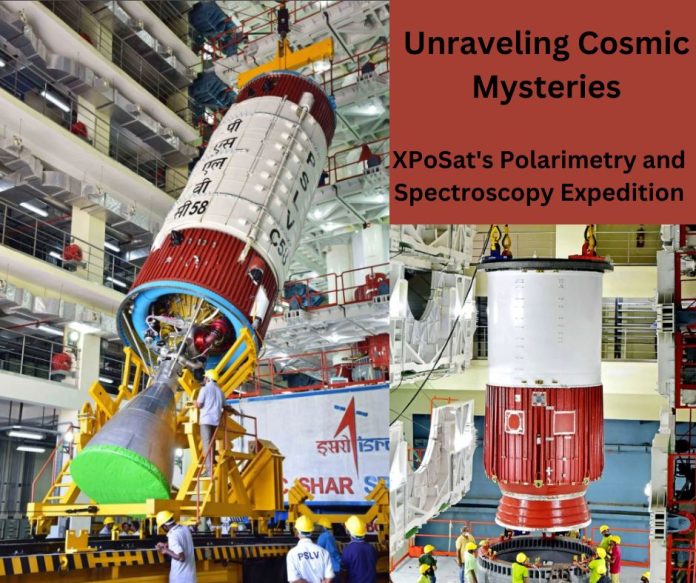X-ray Polarimeter Satellite (XPoSat)
XPoSat (X-ray Polarimeter Satellite) marks India’s first dedicated polarimetry mission exclusively dedicated to studying various dynamics of bright astronomical X-ray sources under extreme conditions. Positioned in low Earth orbit, the spacecraft will host two scientific payloads. The primary payload POLIX (Polarimeter Instrument in X-rays) is designed to measure the polarimetry parameters- specifically, the degree and angle of polarization- in a medium X-ray energy range of 8-30 keV photons of astronomical origin. Concurrently, the XSPECT (X-ray Spectroscopy and Timing) payload will furnish spectroscopic information within the 0.8-15 keV energy range.
Understanding the emission mechanism from various astronomical sources like neutron stars, blackhole, active galactic nuclei, pulsar wind nebulae, etc. originates from complex physical processes, presenting a formidable challenge for astronomers. Despite the wealth of information provided by various space-based observatories through spectroscopic and timing information, the exact nature of emissions from these sources still poses deeper challenges. The incorporation of polarimetry measurements adds two more dimensions to our understanding- the degree of polarization and the angle of polarization and thus is a valuable diagnostic tool for comprehending the emission processes from astronomical sources. The combination of polarimetric observations along with spectroscopic measurements is expected to unravel the intricacies of diverse theoretical models of astronomical emission processes. The Indian scientific community’s primary research focus with XPoSat is expected to center on this pivotal direction.
XPoSat payloads:
- POLIX
POLIX is an X-ray Polarimeter that is dedicated to astronomical observations within the energy band of 8-30 keV. The payload is being developed collaboratively by Ramam Research Institute (RRI), Bangalore, and the U R Rao Satellite Centre (URSC). The instrument comprises a collimator, a scatterer, and four X-ray proportional counter detectors that surround the scatterer. The scatterer is made of low atomic mass material which causes anisotropic Thomson scattering of incoming polarised X-rays. The collimator restricts the field of view to 3 degrees x 3 degrees, ensuring only one bright source within the field of view for most observations. POLIX is anticipated to observe about 40 bright astronomical sources across different categories during the planned lifetime of the XPoSat mission of about 5 years. This is the first payload dedicated to polarimetry measurements in the medium X-ray energy band.
- XSPECT
XSPECT is an X-ray SPECtroscopy and Timing payload onboard XPoSat, which is designed to deliver fast timing and high spectroscopic resolution in soft X-rays. Taking advantage of the long-duration observations required by POLIX for X-ray polarization measurements, XSPECT facilitates long-term monitoring of spectral state changes in continuum emission, alterations in line flux and profile, and simultaneous long-term temporal monitoring of soft X-ray emission within the 0.8-15 keV X-ray energy range. Equipped with an array of Swept Charge Devices (SCDs), XSPECT offers an effective area >30 cm2 at 6 keV, coupled with energy resolution better than 200 eV at 6 keV at the same energy level. The utilization of passive collimators narrows XSPECT’s field of view to mitigate background interference. XSPECT’s observational targets encompass a variety of sources, including X-ray pulsars, black hole binaries, low-magnetic field neutron stars (NS) in LMXBs, active galactic nuclei (AGNs), and Magnetars.






valuable and updated info..thq.
Thank you Swarna Madam